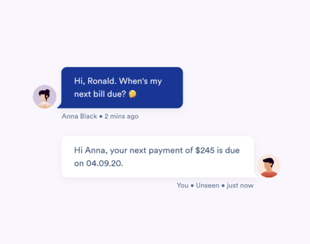First impressions matter. Period.
That’s why it's essential to focus on website design. If you don't start your interaction with website visitors on the right foot, you risk losing them to competitors.
Research indicates that 94% of first impressions of your brand relate to your website design. So it's vital for companies to create an aesthetically appealing website and ensure that it's optimized for the user experience at every step.
When a potential customer stumbles across your business online, you want to seem trustworthy and worth their time. Therefore, it's essential to invest time, money, and effort into creating a beautiful, user-friendly, effective website that reflects your credibility and brand ethos and leads visitors down the path of eventually becoming customers.
To make sure your website is setting your business up for success, give these five website design tips a try:
1. Write thoughtful and visually appealing content.
Back in 2008, the Nielsen Norman Group found that website visitors only actually read up to 28% of the copy on a page, noting that 20% is probably a more accurate estimate. Based on our own habits online, we can safely assume that this research still applies and that those numbers might be even lower today.
Scanning is the name of the game, so companies have to make sure the content on their websites is skimmable and easily digestible. To achieve this, businesses can divide the text into shorter paragraphs and use subheadings, bullets, numbered lists, and visual elements wherever possible.
Here are some tips for presenting your content in a scannable manner:
-
Use white space to your advantage.
-
Avoid lengthy paragraphs.
-
Include a clear and attractive header.
-
Don’t forget a call to action that's simple and that stands out.
-
Make sure the copy is concise, engaging, and error-free.
-
Remove ambiguous terminology or jargon.
-
Use relevant and attractive images, but not something that will detract attention from the important content. Visuals should amplify your message, not distract from it.
-
Include short video clips.
—
To learn more about how you can use gated content to make your website a more effective lead generation and thought leadership tool, download your free  !
!
—
2. Add a live chat widget.

More than half of consumers prefer to get support in real time online rather than calling a company, and B2B companies that use live chat see 20% more conversions. The bad news? Only 9% of websites use live chat.
Besides ensuring reliable and real-time support on your site, integrating live chat software into your website can also give you access to in-depth analytics and the browsing history of your customers, which can be used to offer them a more personalized experience.
But offering live chat support isn't enough — it also has to be easy to find and engage with. Make sure your live chat widget is highly visible, preferably at the right bottom corner of the screen, so users can access it instantly without wasting any time.
3. Invest in a responsive, mobile-friendly website design.
More and more people are accessing websites on mobile, so it's more important than ever for businesses to embrace mobile-friendly website design. Today, over 61% of users surf the web using a mobile device. And Google has found that 89% of users are likely to recommend a brand after a positive mobile experience, while 46% prefer not to buy from a brand whose website provides a poor mobile experience.
The verdict is clear: A poor mobile experience leads to churn, while mobile-optimized sites lead to better engagement, word-of-mouth publicity, and more sales in the long run. Invest in a responsive website design that automatically adjusts to users’ screen sizes for a seamless experience.
4. A/B-test your CTA buttons.
Call-to-action buttons are used to guide users toward conversion. In general, your CTA buttons should include text that's short yet action-packed to compel users to take the desired action. Avoid using words like "enter" or "submit"; instead, use more powerful verbs like "reserve," "download," etc., to derive more of a reaction.
It's also a good idea to A/B-test your CTA buttons to throw guesswork out the window and nail down which copy or button colors actually click with your audience. You can use a marketing automation tool to create different workflows and provide flexibility in testing different versions of your CTA buttons, as well as their placement on your website pages.
5. Include customer testimonials in your website design.
Did you know that online reviews or customer testimonials influence the purchase decisions of more than 90% of consumers?
Humans are social beings, and placing testimonials or reviews on your website creates social proof for your services or products. It shows visitors that others have had a good experience working with your company and can give consumers the confidence to make a purchase.

Start by asking customers to review or rate your products or send in a short video sharing their experience. Once you have the material ready, display it prominently on your website for maximum visibility.
The customer experience is a dynamic concept, but the basic web design principles shared above will always hold your site in good stead and help you provide a stellar experience for the potential customers who visit your site.
Another key component of providing a great user experience on your website is to provide visitors with engaging content that helps them solve their pain points. To learn more about how you can use content to reach your business goals, download your free whitepaper below.











